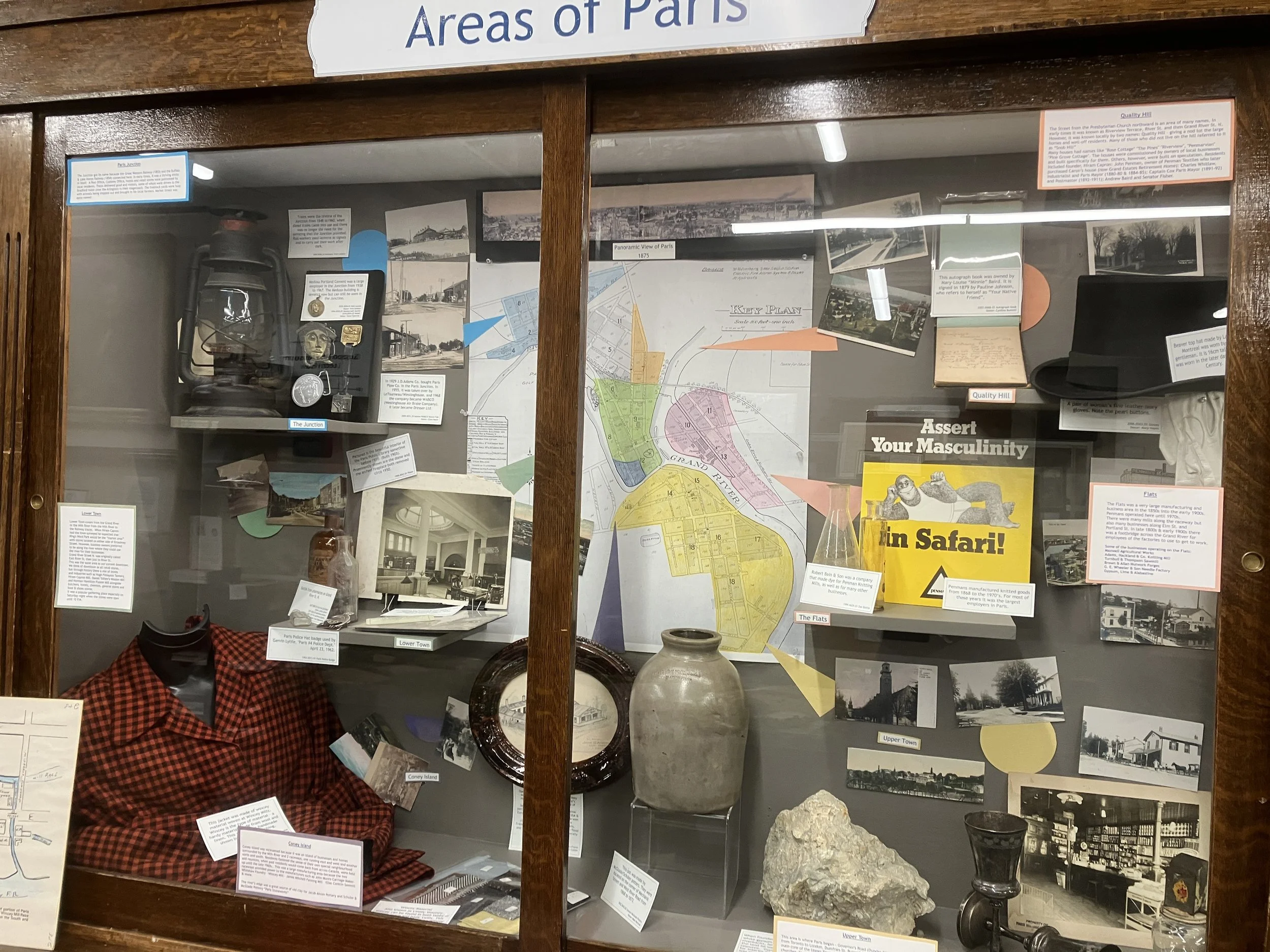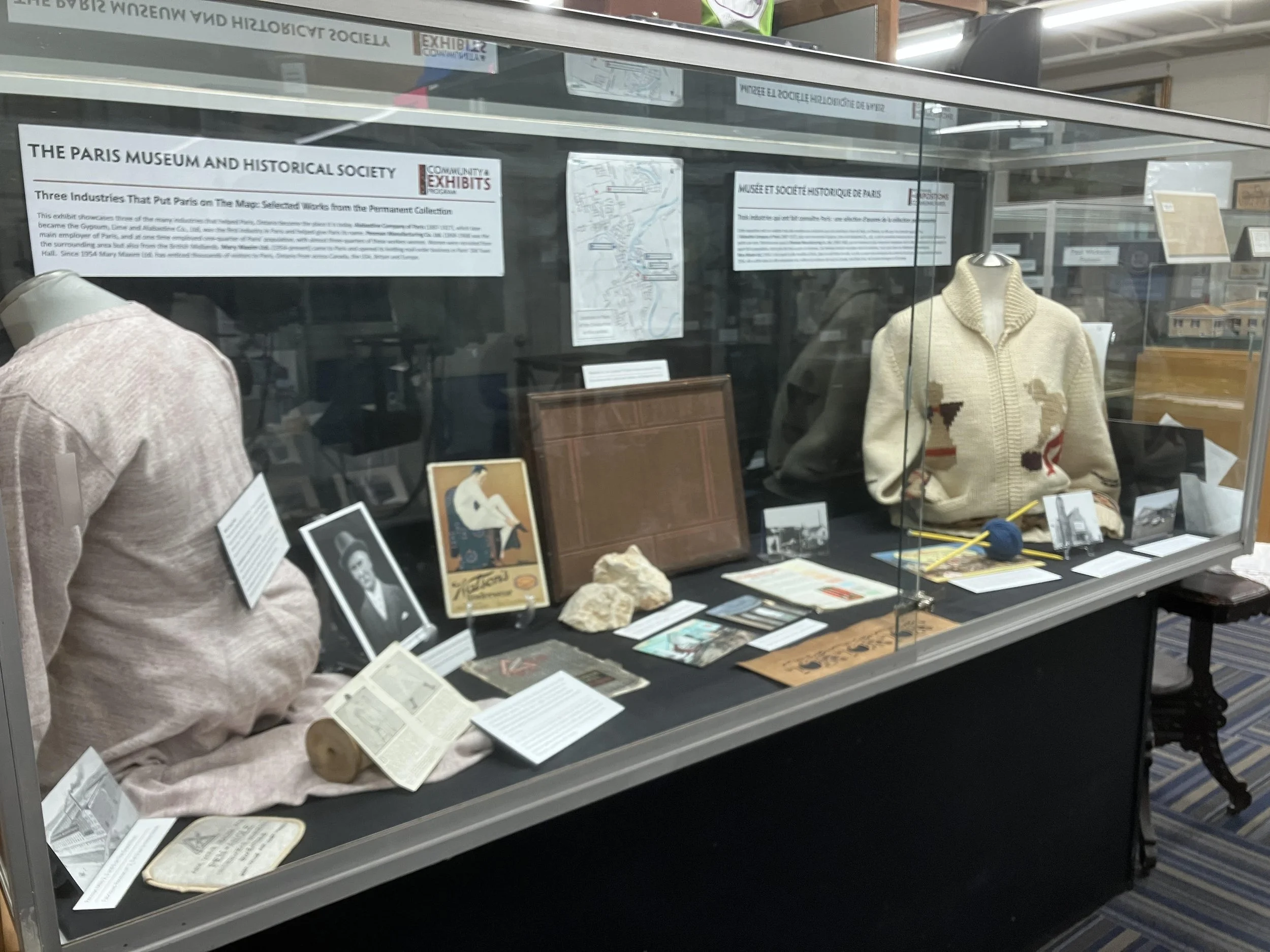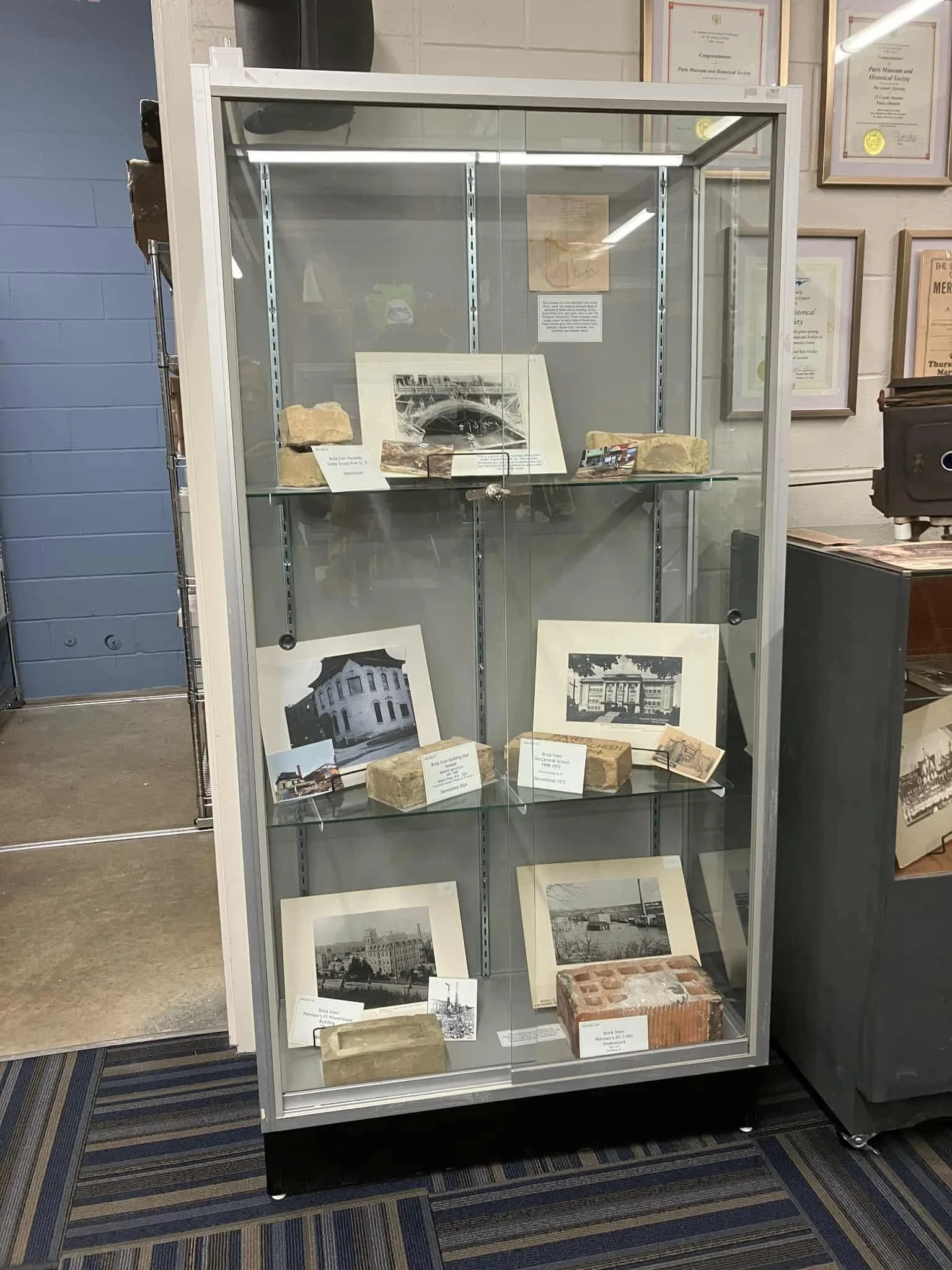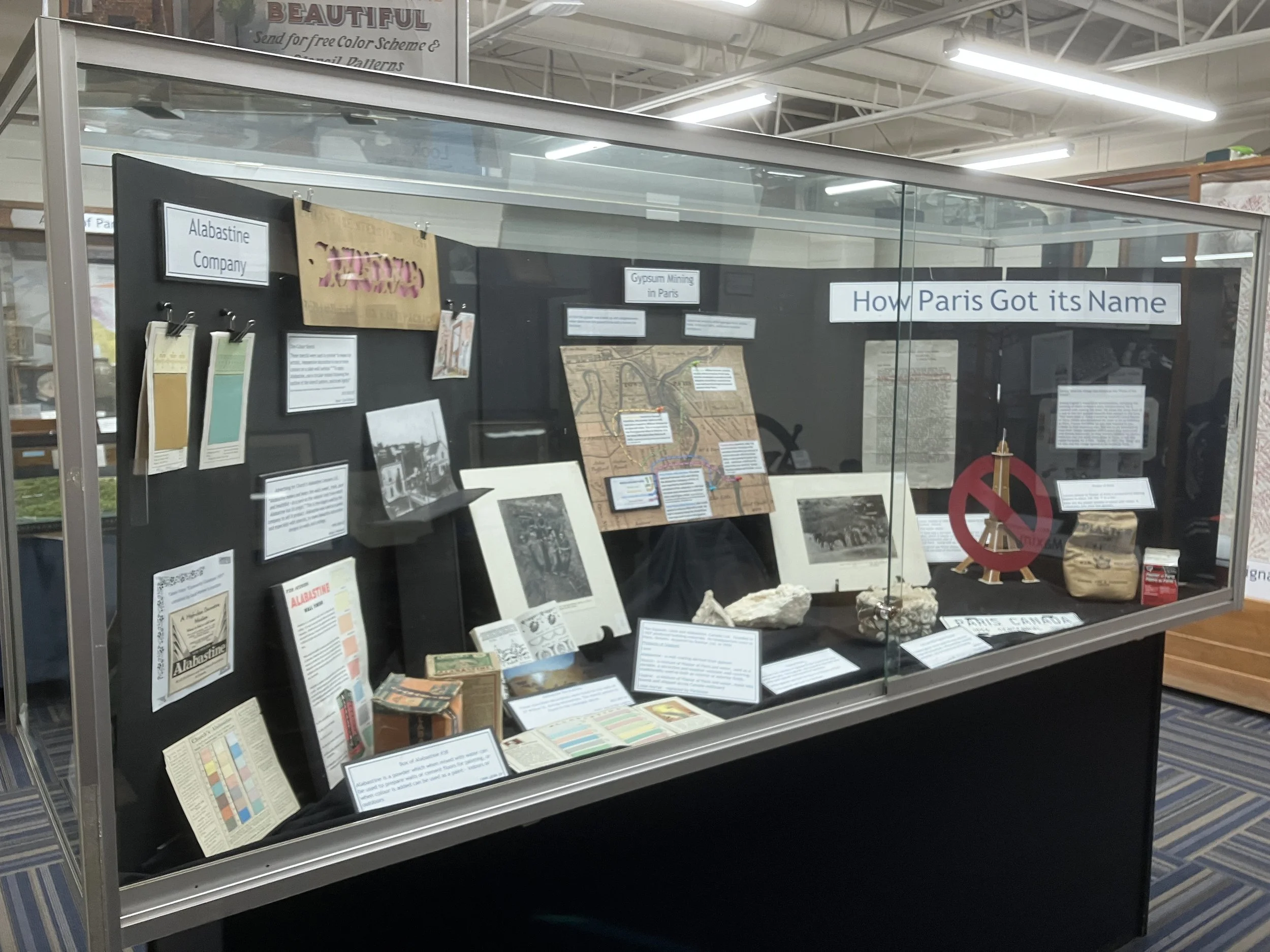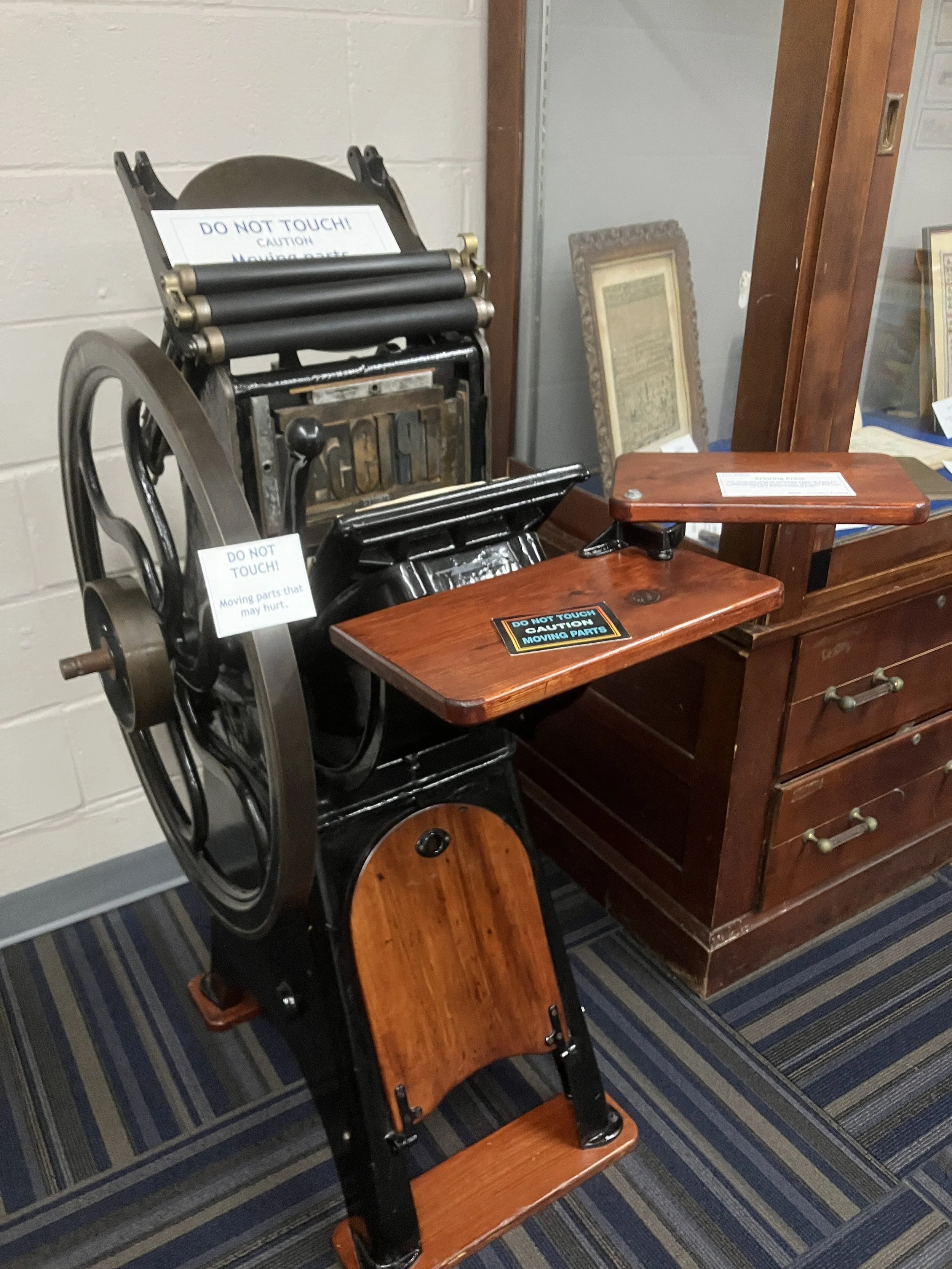Current Exhibits
-
![]()
1917 Signature Quilt
To make money to help the war effort Signature Quilts were made. A person would pay a few cents to write their name on a material square, the ladies of Paris embroidered these signatures then sewed the squares together into a quilt which they raffled off the quilt.
-
Areas of Paris
Names of different areas in Paris with their “old” names - Upper Town, Lower Town, Coney Island, The Flats, The Junction and Quality Hill - with artifacts from businesses, public institutions, and residents in each area.
-
![]()
Annie Broughton Letters
Annie sent Care packages to soldiers in WW2. To get the package they had to send her a Thank You note. She continued corresponding with many of these soldiers through the war. We have 750 letters sent from “her” soldiers.
-
![]()
Mary Maxim, including the "Traveling Thunderbirds"
-
![]()
Fine Dining in Paris
-
![]()
Three Industries That Put Paris on the Map
-
![]()
Entertainment in Paris
A Magic Lantern to a record from the Capitol Theatre, photos of plays performed in 1860s to play programs performed in 1990s - the history of entertainment in Paris begins when Paris was still a village.
-
![]()
Buildings we have Lost in Paris
Bricks from top to bottom:
For a number of years, the millrace going between the Nith and Grand Rivers cut across Grand River St., with a wooden bridge across it. It was decided to run the millrace under Grand River St. And so the brick arch under downtown Paris was built.
The Maxwell Agricultural/Walker Press building, on Willow Street, was demolished in 2024.
Central School was demolished in 1972 when the “new” Central School was built.
Penman'sMill #1, on West River St., the powerhouse building was demolished but the factory buildings were renovated into apartments.
Penman’s Mill #2& 3 were demolished in 1986 and this brick is from the smokestack of those mills.
-
How Paris Got Its Name
We were named after Plaster of Paris not Paris, France. Plaster of Paris was mined from the gypsum all around the town and used by Alabastine to help all people decorated their homes.
-
Thompson Printing Press
This press was used by Thompson Printing for approximately 50 years. Thompson Printing has always been a family business - starting out with this letterpress in the backyard garage over 70 years ago.
-
![]()
Penmans Time Clock

